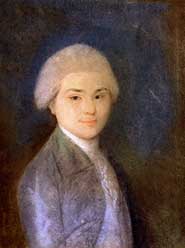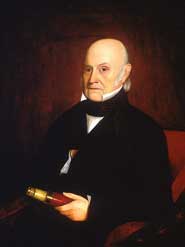A Treasure Behind the Scenes

/Pastel on vellum / National Portrait Gallery
Not often on view because of the fragility of the pastel medium is NPG’s portrait of John Quincy Adams (1767–1848), executed by the German artist Izaac Schmidt in July 1783. The National Portrait Gallery has many other representations of Adams—showing him as a diplomat, as the sixth president of the United States, and especially as “Old Man Eloquent” of the House of Representatives—but this small drawing, done during the month in which Adams turned sixteen, has the distinction of being his earliest known likeness.
Young Adams had accompanied his father, John Adams—who had been appointed as one of the negotiators to bring the war with England to a close—on a second trip to Europe in 1779, even though he preferred to remain in Massachusetts and prepare for entrance into Harvard. But there was no resisting the persuasion of his mother—the formidable Abigail—who insisted that the experience of travel and the opportunity to learn foreign languages would be to his future advantage.
As it happened, in 1781 young Adams, fluent in French, was recruited to go to Russia as secretary and interpreter for Francis Dana’s futile mission to persuade the court of Catherine the Great to recognize American independence. Adams posed for his portrait just after he had made his way from Russia to the Hague (where he awaited his father’s return from France), traveling 1,200 miles through Finland, Sweden, Denmark, and Germany. The three months he spent at the Hague, Adams recalled in 1814, “was the precise time of my change from boy to man, and has left indelible impressions upon my Memory.”

William Hudson, Jr,1844 / Oil on
canvas / National Portrait Gallery
Adams gave the original portrait to his sister Nabby, and later had a copy made for his wife Louisa Catherine, pointing out that he appeared in his “best coat and powdered hair.” When he was sixty-four (the age the Beatles sang about), Adams, contemplating his young self, observed, “And they who look at the bald head, the watery eye, and the wrinkled brow of this day, would search in vain for the strong likeness which it was said to exhibit when it was taken.”
Adams’s old self is to seen in the Portrait Gallery’s “America’s Presidents” exhibition, as well as on the first floor, where he is pictured with spyglass in hand, signifying his love for astronomy, which prompted his significant role in the establishment of the Smithsonian Institution.